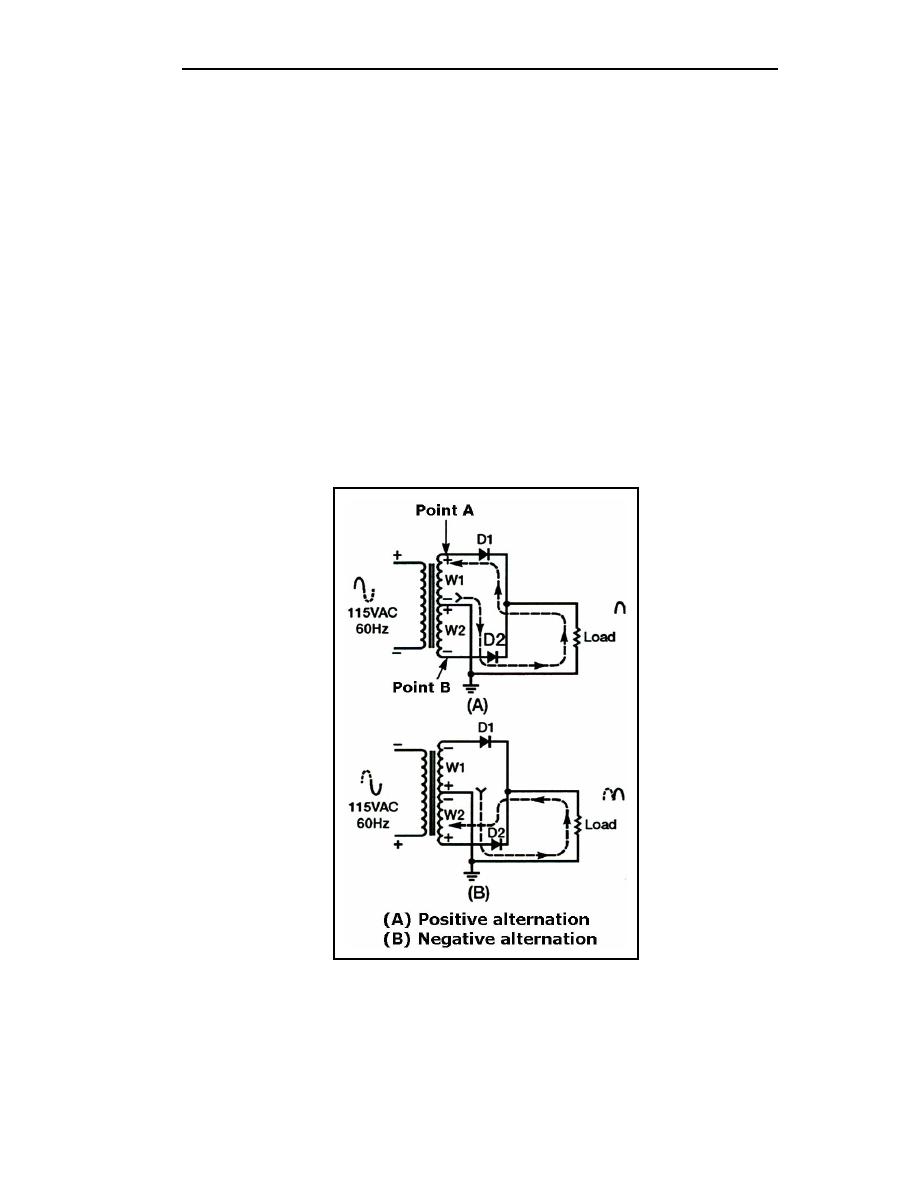
TC 9-62
high-voltage secondary winding that is divided into two equal parts (W1 and W2). W1
provides the source voltage for D1 and W2 provides the source voltage for D2. The
connections to the diodes are arranged so that the diodes conduct on alternate half cycles.
4-14. During one alternation of the secondary voltage, the polarities are as shown in
Figure 4-5, view (A). The source for D2 is the voltage induced into the lower half of the
secondary winding of the transformer (W2). At the specific instant of time shown in the
figure, the anode voltage on D2 is negative and therefore cannot conduct. Throughout the
period of time during which the anode of D2 is negative, the anode of Dl is positive. Since
the anode of Dl is positive, it conducts, causing current to flow through the load resistor in
the direction shown by the arrow.
4-15. Figure 4-5, view (B) shows the next half cycle of secondary voltage. Now the
polarities across W1 and W2 are reversed. During this alternation, the anode of D1 is
driven negative and Dl cannot conduct. For the period of time that the anode of Dl is
negative, the anode of D2 is positive, permitting D2 to conduct. Notice that the anode
current of D2 passes through the load resistor in the same direction, as did the current of
Dl. In this circuit arrangement, a pulse of load current flows during each alternation of the
input cycle. Since both alternations of the input voltage cycle are used, the circuit is called
a FULL-WAVE RECTIFIER.
Figure 4-5. Simple Full-wave Rectifier
Practical Full-Wave Rectifier
4-16. Figure 4-6, view (A) shows a practical full-wave rectifier circuit. It uses two
diodes (Dl and D2) and a center-tapped transformer (T1). When the center tap is grounded,
4-6
TC 9-62
23 June 2005



 Previous Page
Previous Page
